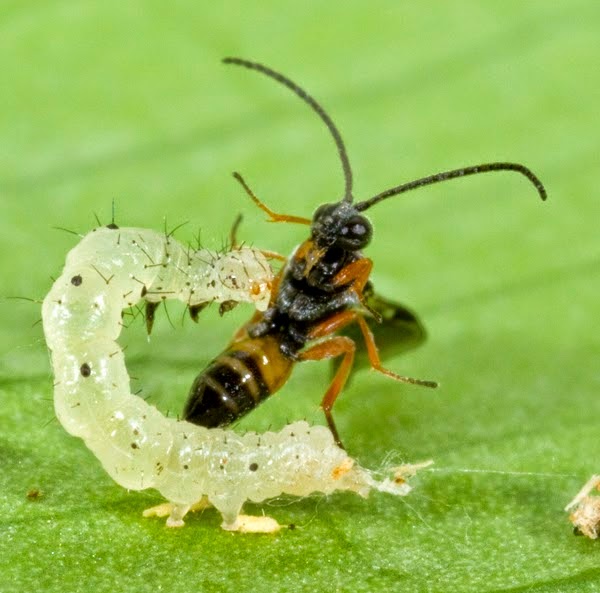 |
| Microplitis infecting its host worm. Source: upclosephotography.blogspot.com |
Although most viruses are associated with harmful diseases that are caused as a result of infection, there is also a large family of viruses who have a friendly association with their hosts. Called Polydnaviruses, these viruses have long been known to exist, mutually, with their hosts, the parasitoid wasps (which rely on smaller insects such as worms for their reproduction). On gaining maturity, the parasitoid wasps lays its eggs in the body of a living worm, where they incubate and hatch after the gestation period.
When the wasp lays eggs into the the worm, it is quite natural that the worm’s immune system will detect a foreign body and act against it. While the wasp has no control over the immune system of the worm, it is the Polydnavirus, that it has injected, along with its eggs, that it depends upon to keep its eggs safe.
Polydnaviruses have just two main missions in their life cycle.



2 comments
[…] practice has been a major point of controversy for animal welfare activists, who argue that it is cruel and unnecessary. According to estimates, […]
[…] of the main reasons is the difference in the mutation rate of the COVID virus and HIV. Scientists could track and study the most infective variants of COVID […]